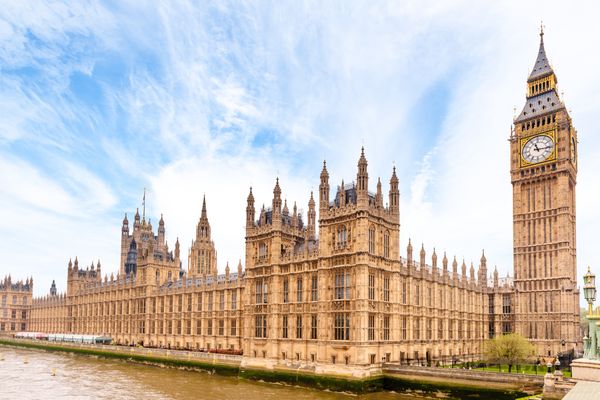2.2.14
Elizabeth's Last Years
The Last Years of Elizabeth's Rule
The Last Years of Elizabeth's Rule
Although Elizabeth I is remembered as one of our greatest monarchs, England endured hard times during the last decade of her reign.


Foreign policy
Foreign policy
- England was at war with Spain. Spain was bankrupt and England was under severe financial strain.
- England’s allies were: Scotland, France, the Northern Dutch provinces.
- England’s enemy was Spain.
- England had begun making some headway in the New World, although all attempts to found colonies had failed.
- New trading links had been made with Russia and India.


Politics
Politics
- Elizabeth was an ageing monarch who was unable to fully manage the new factions at court.
- Robert Cecil took over from William Cecil as Elizabeth’s Principal Secretary.
- The Privy Council met every day by the 1590s. It could govern without needing a parliament.
- Parliament had stood up to Elizabeth over the issue of monopolies in 1601. Her reply, the Golden Speech, was a rare apology.
- The workload of JPs and importance of gentry continued to grow.


Religion
Religion
- The Church of England was firmly established. England’s religion was Protestant.
- Catholicism was less popular in the last decades of Elizabeth’s reign because it became associated with Spain and treason.
- Puritanism had also been associated with treason and its growth checked.


The economy
The economy
- Employers, landowners, the professions and merchants became richer.
- Cottage industry was doing well.
- Some older towns were doing worse but new urban centres were developing.
- Trade opportunities were increasing. Links with Russia and India were building.
- Wage labourers’ real wages fell. This benefitted employers.
- Enclosure was seen as an evil thing, but was limited in reality.


Society
Society
- The social hierarchy remained very much intact. The bulk of the people were poor, illiterate and were adversely affected by inflation.
- The gentry grew as a class. Professionals and employers did well in towns.
- Vagrancy had continued to grow and new systems of poor relief established.
- The rural poor migrated to the towns.
- There was a great hardship in the town and countryside because of the bad harvests and outbreaks of plague in the 1590s.


Culture
Culture
- Theatres and music were thriving and available to people of all classes.
- The England Reformation had a positive impact on theatre, music and literature.
- Literature and education were thriving, but only for the middle and upper classes. Girls’ education was still based around the home even in the middle classes.


Historical assessment
Historical assessment
- Historian John Guy has a theory that Elizabeth's reign can be broken into two very distinct parts. Her 'second reign' began after 1588 and was marked by troubles such as war and diplomatic failures overseas, and poverty and factionalism at home.
- Patrick Collison calls this period the 'nasty nineties'.
- For example, agricultural prices increased more in real terms between 1594 and 1598 than they had at any time before.
The Succession Crisis in Elizabeth's Last Years
The Succession Crisis in Elizabeth's Last Years
The Succession Crisis plagued Elizabeth I's reign. She only named her successor on her deathbed, much to the anxiety of her closest advisors.


Claimants
Claimants
- James VI of Scotland was the son of Mary Queen of Scots.
- His claim to the English throne came through his great-grandmother, Margaret Tudor (Henry VIII's sister).
- After it became apparent Elizabeth I would not marry or have children, James was the most likely claimant for the English throne.


Succession
Succession
- Elizabeth I only named James as her successor on her deathbed in 1603.
- He was coronated on 25 July 1603 as King James I of England.
1Consolidation of the Tudor Dynasty 1485-1547
1.1Henry VII 1485-1509
1.1.1Henry VII's Consolidation of Power
1.1.2Henry VII & Succession
1.1.3Henry VII's Councils & Parliament
1.1.4End of Topic Test - Henry VII Part 1
1.1.5Henry VII & Justice, Finance & Policies
1.1.6Henry VII's Relationship with Foreign Powers
1.1.7Henry VII & Society
1.1.8End of Topic Test - Henry VII Part 2
1.1.9Henry VII & Regional Issues
1.1.10Henry VII & Economic Development
1.1.11Henry VII & Cultural Development
1.1.12End of Topic Test - Henry VII Part 3
1.2Henry VIII 1509-1547
1.2.1Henry VIII's Consolidation of Power
1.2.2Henry VIII & His Government
1.2.3Henry VIII & His Government 2
1.2.4End of Topic Test - Henry VIII Part 1
1.2.5Henry VIII & Succession
1.2.6Henry VIII's Relationship with Foreign Powers
1.2.7Henry VIII & Society
1.2.8End of Topic Test -Henry VIII Part 2
1.2.9Henry VIII & Society 2
1.2.10Henry VIII & Economic Development
1.2.11Henry VIII & Religion
1.2.12End of Topic Test - Henry VIII Part 3
2England: Turmoil & Triumph 1547-1603
2.1Instability & Consolidation 1547-1563
2.1.1Edward VI, Somerset & Northumberland
2.1.2Edward VI & Authority
2.1.3Edward VI & Relations with Foreign Powers
2.1.4End of Topic Test - Edward VI Part 1
2.1.5Edward VI & Rebellions
2.1.6Social Impact of Religious & Economic Changes
2.1.7Edward VI & Cultural Developments
2.1.8End of Topic Test - Edward VI Part 2
2.1.9Mary I & Her Rule
2.1.10Mary I & Relations with Foreign Powers
2.1.11The Social Impact of Religious & Economic Change
2.1.12End of Topic Test - Mary Part 1
2.1.13Elizabeth I & Her Rule
2.1.14Elizabeth I & Relations With Foreign Powers
2.1.15Impact of Economic, Social & Religious Change
2.1.16End of Topic Test - Elizabeth I Part 1
2.2The Triumph of Elizabeth 1563-1603
2.2.1Elizabeth I & Court
2.2.2Elizabeth & Government
2.2.3Elizabeth I & Succession
2.2.4End of Topic Test - Elizabeth I Part 2
2.2.5Mary Queen of Scots
2.2.6Relations with Spain
2.2.7End of Topic Test - Elizabeth I Part 3
2.2.8Elizabeth I & Society
2.2.9Elizabeth I & Rebellion
2.2.10Elizabeth & Economic Development
2.2.11End of Topic Test - Elizabeth I Part 4
2.2.12Elizabeth I & Religious Developments
2.2.13The English Renaissance
2.2.14Elizabeth's Last Years
2.2.15End of Topic Test - Elizabeth I Part 5
Jump to other topics
1Consolidation of the Tudor Dynasty 1485-1547
1.1Henry VII 1485-1509
1.1.1Henry VII's Consolidation of Power
1.1.2Henry VII & Succession
1.1.3Henry VII's Councils & Parliament
1.1.4End of Topic Test - Henry VII Part 1
1.1.5Henry VII & Justice, Finance & Policies
1.1.6Henry VII's Relationship with Foreign Powers
1.1.7Henry VII & Society
1.1.8End of Topic Test - Henry VII Part 2
1.1.9Henry VII & Regional Issues
1.1.10Henry VII & Economic Development
1.1.11Henry VII & Cultural Development
1.1.12End of Topic Test - Henry VII Part 3
1.2Henry VIII 1509-1547
1.2.1Henry VIII's Consolidation of Power
1.2.2Henry VIII & His Government
1.2.3Henry VIII & His Government 2
1.2.4End of Topic Test - Henry VIII Part 1
1.2.5Henry VIII & Succession
1.2.6Henry VIII's Relationship with Foreign Powers
1.2.7Henry VIII & Society
1.2.8End of Topic Test -Henry VIII Part 2
1.2.9Henry VIII & Society 2
1.2.10Henry VIII & Economic Development
1.2.11Henry VIII & Religion
1.2.12End of Topic Test - Henry VIII Part 3
2England: Turmoil & Triumph 1547-1603
2.1Instability & Consolidation 1547-1563
2.1.1Edward VI, Somerset & Northumberland
2.1.2Edward VI & Authority
2.1.3Edward VI & Relations with Foreign Powers
2.1.4End of Topic Test - Edward VI Part 1
2.1.5Edward VI & Rebellions
2.1.6Social Impact of Religious & Economic Changes
2.1.7Edward VI & Cultural Developments
2.1.8End of Topic Test - Edward VI Part 2
2.1.9Mary I & Her Rule
2.1.10Mary I & Relations with Foreign Powers
2.1.11The Social Impact of Religious & Economic Change
2.1.12End of Topic Test - Mary Part 1
2.1.13Elizabeth I & Her Rule
2.1.14Elizabeth I & Relations With Foreign Powers
2.1.15Impact of Economic, Social & Religious Change
2.1.16End of Topic Test - Elizabeth I Part 1
2.2The Triumph of Elizabeth 1563-1603
2.2.1Elizabeth I & Court
2.2.2Elizabeth & Government
2.2.3Elizabeth I & Succession
2.2.4End of Topic Test - Elizabeth I Part 2
2.2.5Mary Queen of Scots
2.2.6Relations with Spain
2.2.7End of Topic Test - Elizabeth I Part 3
2.2.8Elizabeth I & Society
2.2.9Elizabeth I & Rebellion
2.2.10Elizabeth & Economic Development
2.2.11End of Topic Test - Elizabeth I Part 4
2.2.12Elizabeth I & Religious Developments
2.2.13The English Renaissance
2.2.14Elizabeth's Last Years
2.2.15End of Topic Test - Elizabeth I Part 5
Unlock your full potential with Seneca Premium
Unlimited access to 10,000+ open-ended exam questions
Mini-mock exams based on your study history
Unlock 800+ premium courses & e-books